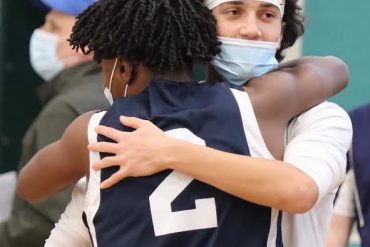To the editor:
I am a lifelong seasonal resident of Nantucket and the Government Relations Manager to a 501(c)4 that lobbies for Federal Lyme and Tick-borne disease research funding. This is my story.
After a long Figawi weekend spent in my mid 20’s, I returned home to Boston to be greeted by a myriad of symptoms, including excruciating joint pain and severe fatigue. Back then, I didn’t realize Lyme disease accounts for 71% of all infectious diseases on Nantucket, nor did I know that Nantucket has one of the highest incidence rates of Lyme in the country. The joint pain wasn’t anything serious, they said, since I had no fever and no bullseye rash. My doctor suggested it was stress and recommended I see a psychiatrist instead. From that point on, my symptoms progressed into rogue viral infections, auditory and visual hallucinations, celiac disease, painful rashes, temporal blindness, severe panic attacks, meningitis, black outs, stabbing migraines, malaise, and much more.
After almost 10 years of ER visits at top Boston-area hospitals and dozens of negative Lyme tests later, I was still convinced I had a tick-borne infection. Everyone around me, including those closest to me, were worried I had lost my mind. I decided to follow my intuition by doing more research and found that Nantucket County residents reported the single-highest rate of confirmed or probable cases of Lyme disease per capita between 2010 and 2015 in the entire country (according to the CDC, as reported by The Boston Globe). Additionally, the CDC ranked Massachusetts as the number three state in America for tick and mosquito-related diseases between 2004 and 2016.
In the late Spring of 2020, I paid out-of-pocket for an iGenex Lyme test, a more sensitive panel of Lyme testing with much greater accuracy than the standard CDC-recommended Western blot, which only catches around 38% of all cases. My lab work lit up with multiple positive bands of Borrelia (Lyme disease), as well as other tick-borne infections. Had I been treated with 21 days of doxycycline at the very onset, I would most likely be infection-free today. Despite several desperate pleas to multiple doctors, no one in Boston or on Nantucket would prescribe me doxy since my labs were normal.
A few months after starting treatment, I decided to reach out to Center for Lyme Action, a 501(c)4 in Washington, D.C. that lobbies for increased Federal funding for Lyme and tick-borne disease research with the goal of finding a cure. Over a year later I now serve as the organization’s Government Relations Manager and recently represented Nantucket County on Capitol Hill at our annual Lyme Fly-in on February 23rd.
The Lyme Fly-in is an opportunity for Lyme advocates anywhere in the United States to meet with their elected representatives in Congress and explain why increased Federal funding for Lyme disease is desperately needed, and to ask for support with the upcoming Fiscal Year 2023 appropriations requests.
Upon registering for the Fly-in, I received a link with my online schedule of meetings for the big day. In this case, I was to meet with the offices of U.S. Senator Elizabeth Warren (D-MA), U.S. Senator Ed Markey (D-MA), and U.S. Representative Bill Keating (MA-09). After a brief introduction explaining my close connection to Lyme disease and Nantucket, I was off and running. I presented a summary of CLA’s seven Fiscal Year 2023 appropriations requests to Congress for Lyme disease:
- Fund the Kay Hagan Tick Act (Request: $30M) – Legislation that was passed by Congress in 2019 which authorizes $30,000,000 to be appropriated toward the Department of Health and Human Services in order to develop a National strategy to combat vector-borne diseases, including Lyme and Tick-borne disease. So far, only $4M has been enacted for this effort.
- Fund the HHS LymeX Innovation Accelerator (Request: $5M) – LymeX is a public-private partnership with The Department of Health and Human Services and the Steven & Alexandra Cohen Foundation that will “accelerate Lyme innovation progress and strategically advance tick-borne-disease solutions in direct collaboration with Lyme patients, patient advocates, and diverse stakeholders across academia, nonprofits, industry, and government.” $5M annually is required to keep this effort moving forward.
- Fund NIH Lyme & Tick-borne Disease Centers of Academic Excellence (Request: $100M) – A new program that leverages the successful model of the National Cancers Institute-Designated Cancer Centers by establishing multiple Centers of Academic Excellence for Lyme and Tick-borne disease at universities and research institutions throughout the United States. The need for this is dire, as Lyme funding for academic research is incredibly limited and inconsistent.
- Fund ARPA-H TICK Clinical Trials Network (Request: $50M) – The private sector does not currently fund clinical trials for Lyme and Tick-borne disease therapeutics due to high risk and lack of financial return. In partnership with DARPA’s ECHO Technology, an innovative epigenetics project, the TICK Clinical Trials Network would be established under the Biden Administration’s new Advanced Research Projects Agency for Health for faster innovation to find reliable diagnostic and treatment methods.
- Fund Lyme & Tick-borne disease prevention programs (Request: $30M) – this would allow the Centers for Disease Control and Prevention (CDC) to bolster critical prevention programs and public awareness efforts for Lyme and tick-borne disease, develop safer and more effective tick repellents, Improve TickNET surveillance networks, and accurately determine disease burden.
- Fund NIH Lyme disease and other tick-borne disease research (Request: $121M) – The CDC estimates at least 476,000 (cases) Americans get Lyme disease in the US each year. Only $117 per patient is allocated toward Lyme funding for NIH NIAID research, which is far less funding compared to much more rare infectious diseases:
– West Nile (731 cases) – $36,936 per patient
– Malaria (2000 cases) – $137,500 per patient
- Fund Peer-reviewed Tickborne Disease Research for DOD (Request: $9M) – This request would provide research funding to the Department of Defense Peer-Reviewed Tick-borne Disease Research Program, supporting our Nation’s armed forces and their dependents who suffer from lyme and Tick-borne disease.
After wrapping up the 30-minute meeting, I followed up with a brief thank you email and submitted my formal appropriations requests to each office. Past Fly-ins have proven incredibly effective, nearly doubling Federal Lyme disease funding from Fiscal Year 2020 to Fiscal Year 2021. And while the Fiscal Year 2022 budget isn’t yet finalized, both the House and the Senate have already proposed or voted for additional Lyme funding. It is my hope that we can get up to at least 100 Nantucket residents signed up for next year’s Capitol Hill Lyme Fly-in and make some real change for this island.
While I still suffer from the occasional flare ups, I consider myself one of the lucky ones and credit God, homeopathy and a healthy lifestyle for my renewed health. Despite all of the struggles, I feel grateful to be able to share my story and provide some hope for those on Nantucket who are silently suffering.
– Meredith Faucette






